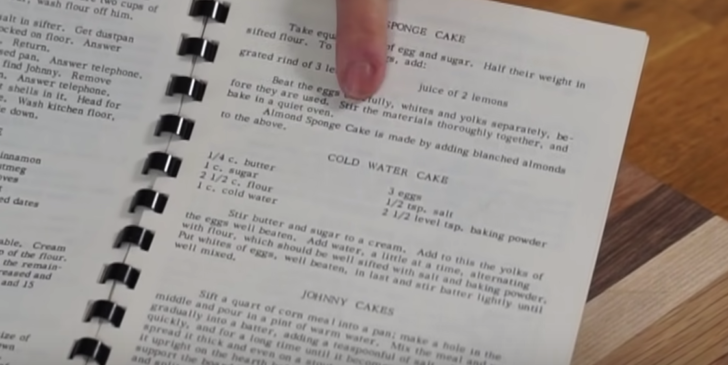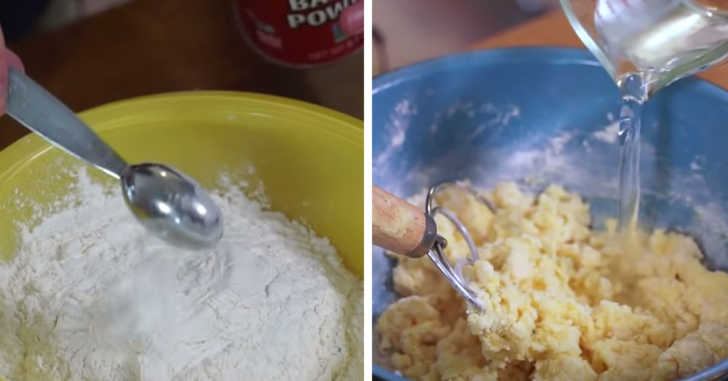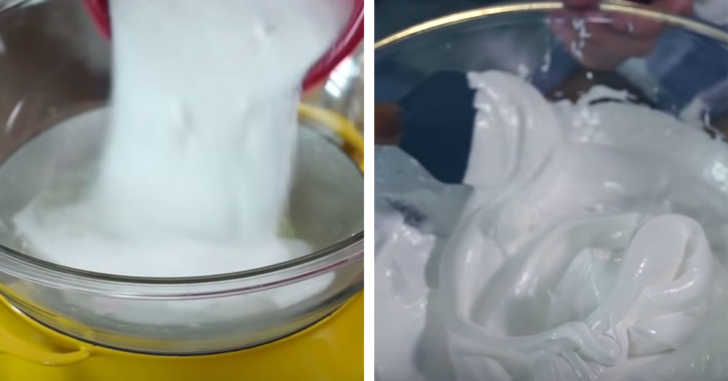
It’s no secret that we love baking. Cakes, cookies, pies, brownies, cupcakes, crumbles… the list goes on and on. However, sometimes the recipes all bleed together and we just want something interesting and different than the average cake or cookie recipe.

That’s where this cold water cake comes into play. The recipe is from an old, depression-era cookbook, so we knew right away there would be some creative ingredients and methods. Sometimes we’re not quite sure how something will turn out, but it’s always an adventure! Keep reading to see how this unique recipe comes together…

Things start out pretty normal – cream butter and sugar together in a large bowl. This may seem like no big deal when we have stand mixers or hand mixers to help us out, but back in the day, these items weren’t available. Go ahead and try mixing room-temperature butter and sugar together by hand, it’s not as easy as you might think. Once combined, mix in egg yolks (keep the egg whites for later) and set aside.

Next, combine your dry ingredients. In this case, flour, baking soda, and salt. Pour a bit of the mixture into the wet ingredients and fold to incorporate. Then, pour in a little cold water, and continue to mix. Keep alternating between adding the dry ingredients and the water, until everything is combined in the same bowl.

Grab those egg whites from earlier and whisk until they form medium-stiff peaks. If you want to be authentic about it, you can whisk by hand. If, however, you don’t want your arm to fall off, we suggest using a hand mixer. Once you get the right consistency, fold the fluffy egg whites into the batter. Pour the cake batter into two round pans and bake at 350 for around thirty minutes.

While the cake is baking, go ahead and make the frosting. Set up a double boiler and combine all of the ingredients right there in the bowl – egg whites, water, cream of tartar, and sugar. That’s it! Mix this up while it’s all cooking over the double boiler, and then let it cool until you’re ready to frost.
The end result is surprisingly beautiful and tasty. The cake ends up being dense, almost like a crumble or a coffee cake, while the frosting is creamy and white. The one note about this recipe that the baker said she would change is in the frosting. While the directions didn’t specify what order to mix the ingredients, she suggests putting the water in first and letting it heat up, and then adding the sugar so it can dissolve.
Watch the video below for more details and recipe suggestions!
SKM: below-content placeholderWhizzco for DOT

